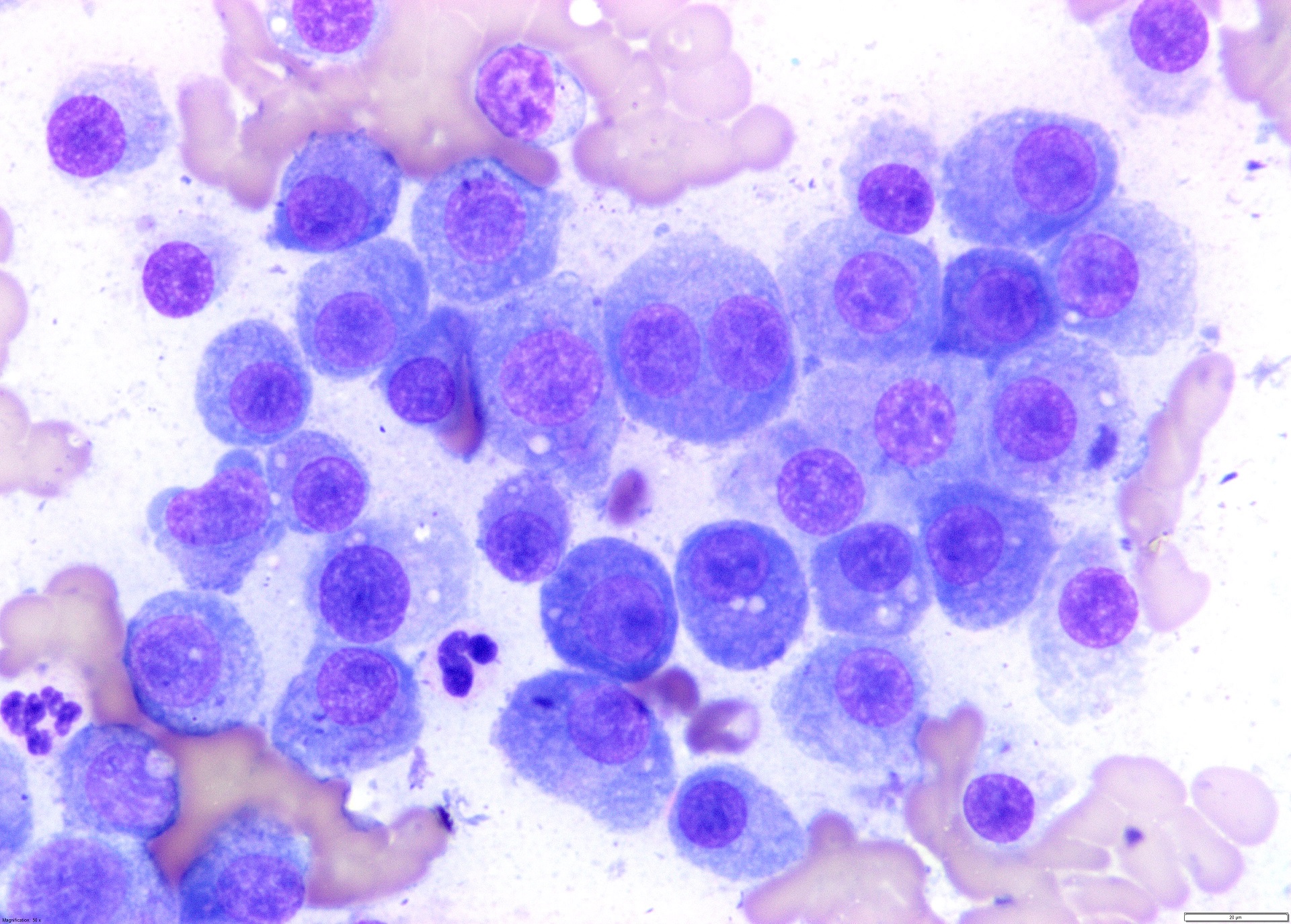Species: Any
Specimen: Aspirated material
Container: Glass slides, slide container
Collection protocol:
21-22 gauge needle alone (“woodpecker” or non-aspiration technique). A smaller gauge needle may lyse the cells (neoplastic lymphocytes are quite fragile) and a large needle may result in too much blood contamination. Expel the aspirated contents onto the top 1/3 of a clean glass slide. Then take another slide, gently place it on top. Do not apply pressure, but use only the weight of the slide to spread out the material. Gently pull the slides along each other lengthwise until they separate. This will result in two slides with a nice monolayer of cells. For very fragile cells, the top slide can be gently placed on top of the material on the bottom slide. Do not apply pressure, but use only the weight of the slide to spread out the material and then lift again without pulling the top slide across. Aspirate multiple lymph nodes. Submandibular lymph nodes tend to be more reactive (as they are draining the oral cavity) so it is not recommended to aspirate only these nodes unless, of course, they are the only nodes that are enlarged.
Special handling/shipping requirements:
Do not ship with formalin (or wrap and bag separately) as the formalin fumes prevent cellular uptake of differential stains rendering the slides non-diagnostic.
General information about the disease: N/A
General information about when this test is indicated: N/A
Comparison with other related tests:
Immunocytochemistry can be performed on submitted cytology slides if they are of good quality (monolayer, not too many lysed cells, etc.).

